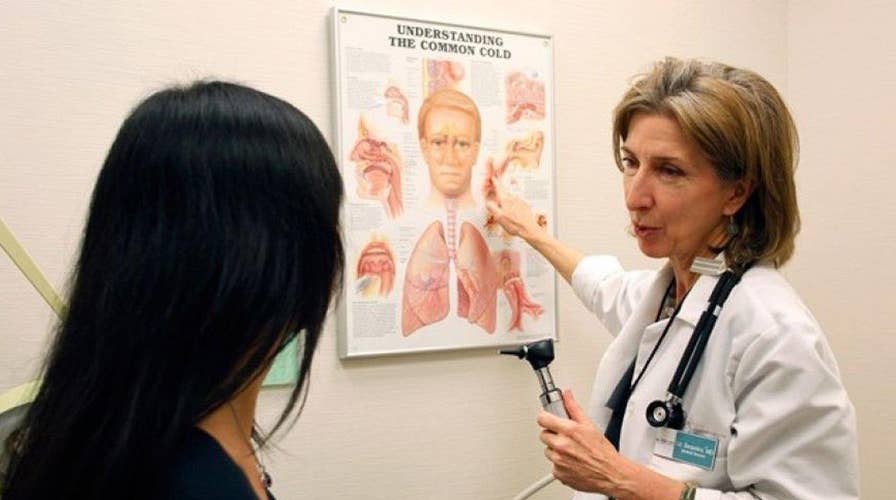Dr. Siegel: ObamaCare crisis is affecting the whole system
Fox News Medical A-Team member sounds off
It’s no secret that ObamaCare isn’t going very well and that at least a partial repeal may be looming under the Trump administration. So-called comprehensive insurance creates more problems than it solves — in my practice, a regulatory chokehold limits referrals and treatments — and doctors have been fleeing from it in increasing numbers.
As of a year ago, at least 20 percent of doctors were not accepting new Medicare patients, 25 percent were not seeing Medicaid patients at all and 43 percent were not participating in the ObamaCare exchanges.
So what might the doctor’s office of the future look like if ObamaCare is scaled back?
- There will likely be more competition, more choice and more out-of-pocket payments, with less regulation.
- There will be more national insurance companies providing more health care plans to choose from. If more patients made payments upfront and then submitted claims to insurance for reimbursement, it would take pressure off the doctor’s office.
- Instead of not knowing the true cost of a health care service because the insurance is covering it rather than the patient, instead certain treatments or tests that are not directly lifesaving but are more focused on improving could be paid for out-of-pocket by tax-deductible, expanded health savings accounts (HSAs), as President-elect Trump proposes. These HSAs could roll over from one family member to the next, from one year to the next, and from one generation to the next. You could save some each year for a rainy day. If you were using your HSA to pay for your ankle xray just to make sure a simple twist is only a sprain, or your calcium scoring coronary ct scan even though your ekg is normal and your internist insists you are at low risk of heart disease, believe me, you would be much more aware of the cost and would be motivated to find out who in town does the best job at the lowest price.
- As a gatekeeper, I would combine price lists along with my lists of referrals. Patients who needed more of my time would pay me more, and I would factor in all the time I spend documenting on the computer.
- Tort reform would lesson my worry that a very rare complication or an unsatisfied customer would lead quickly to a frivolous malpractice suit.
- Doctors’ offices like mine could be transformed from regulatory swamps to places where patients would receive tax incentives for losing weight, improving their diet and increasing their exercise. Right now, we all pay higher premiums to cover those who smoke, binge drink or sit on the couch and overeat. This is hardly fair.
- Instead of the government subsidizing almost every patient on the state exchanges, subsidies could be reserved for high-risk pools to help the chronically ill who can’t afford their premiums. Insurance for high-risk patients with diabetes or heart disease or cancer should be more comprehensive, because they have more needs and greater risk.
- Healthier patients could choose higher-deductible catastrophic-type insurance with lower premiums than are available on the state exchanges and use their HSAs to pay for their regular care. Instead of seeing my office filled with patients with colds or coughs or back pain or for no reason other than the fact that they have insurance, I would see those who are really sick, with flu or strep or high blood pressure or going for surgery.
Further privatizing Medicare could also increase choices. Technological advances have provided more tests and treatments for people as they age and get sicker, but doctors are overwhelmed by the growing demand for services coupled with increased regulations which make it more difficult to deliver these services. House Speaker Paul Ryan’s plan to get rid of the Sustained Growth Formula, which outrageously penalized doctors for an overall increase in Medicare spending, and replacing with a system of rewarding quality care was celebrated by doctors everywhere.
Another Ryan proposal, block Medicaid grants to the states, could be useful if they rely on a team/efficiency model like the one Gov. John Kasich has instituted in Ohio. Most Doctors would welcome being part of a well-oiled machine rather than remain as solo practioners in an insurance system that will never pay us well as individuals.
The doctor’s office of the future will be a friendlier place if there are just two parties in the room: the doctor and the patient. The third party, insurance, belongs at the front desk only, and even there it should not be a looming presence.

